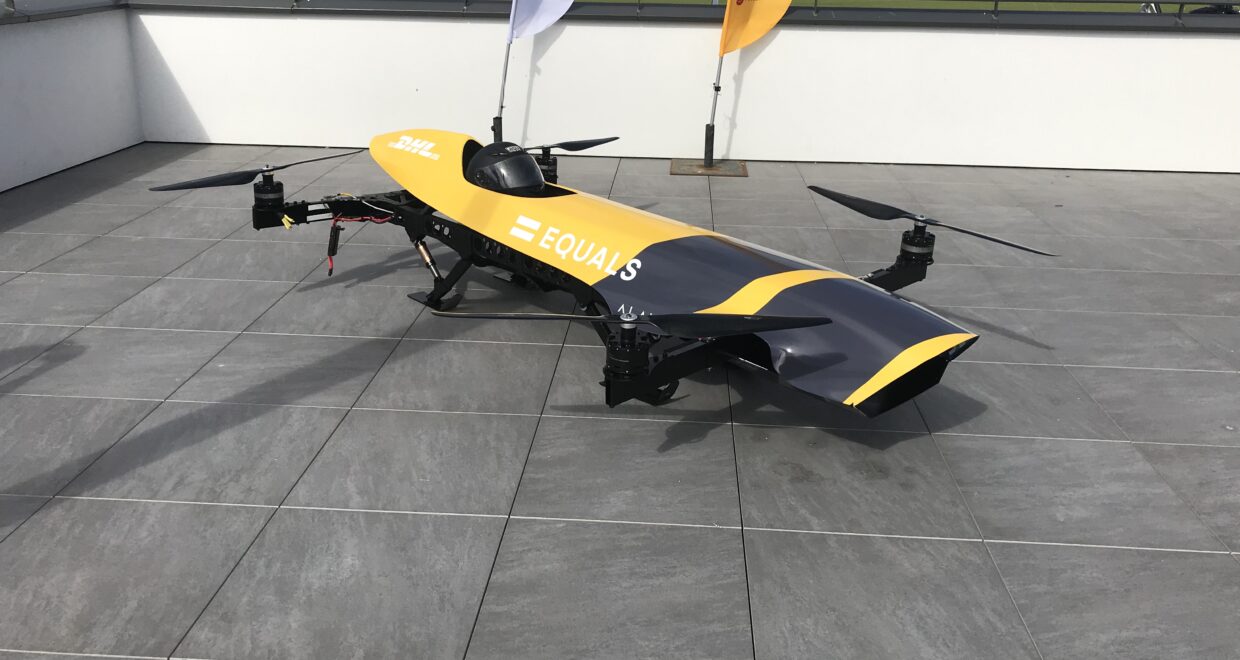A human factors accident analysis framework for UAV loss of control in flight
Image 1 (header): Alauda Airspeeder Mk II with a Mass of 95 kg (Courtesy AAIB)
Image 2 (below): Accident Crash Site 40m from Occupied Houses (Courtesy AAIB)

The Aeronautical Journal July 2025 Vol 129 No 1337
The number of Uncrewed Aerial Vehicles (UAVs) or ‘drones’ in UK skies has increased significantly over the last decade and this trend is set to continue. A recent study by PwC suggests that over the next decade, UAVs could add £45 billion to UK public and private sector economies, reduce carbon emissions by up to 2.4 million tonnes and create over 500,000 jobs. Potential applications are continually broadening and now include ‘last-mile’ deliveries of medical supplies, security, pipeline surveying, building inspection, search and rescue, flood response, agriculture and recreational use by hobbyists.
With these broader applications, UAVs are becoming more complex. Many now incorporate multiple sensors for operations within Visual Line of Sight (VLOS) and Beyond Visual Line of Sight (BVLOS). In order to realise their full potential, a number of challenges need to be overcome – ranging from design, manufacture and maintenance to regulation, operator training, trust in automation and public perception. Developers of UAVs range from disruptive startups with little or no aerospace experience to established manufacturers.
With this increased activity has come a rise in reportable accidents. One such accident which has motivated this research occurred at Goodwood Aerodrome on the 4th of July 2019. The operator of a 95 kg Alauda Airspeeder Mk II scale demonstrator (illustrated) lost control of the aircraft whilst performing a demonstration flight. After recognising and confirming loss of control in flight (LOC-I) the remote pilot activated the safety ‘kill switch’ to no effect. The UAV climbed to approximately 8,000 ft, entering controlled airspace at a holding point for arriving flights at London Gatwick Airport, before its battery depleted and it fell to the ground. The UAV crashed in a field of crops approximately 40 m from occupied houses and 700 m outside of its designated operating area. Fortunately, no one on the ground was injured.
In this paper, 60 UAV accident reports were analysed to identify causal and contributory factors leading to LOC-I, the most common category of UAV accident (36% of all accidents). Design and manufacturing errors emerged as the lead causal factor (34%) and contributory factor (22%). In over half of cases (55%) no recovery attempt recovery was made by the operator.
The relationship between operator age, total hours of experience, experience on type and attempt to recover was analysed. The number of accidents decreased as total hours of experience, similarly, attempts to recover also increased in line with experience.
To assess the suitability of current accident analysis methods for UAV accident analysis three different methods were applied to a sample of accidents: Human Factors Analysis & Classification System, AcciMap and Accident Route Matrix. Based on this evaluation, an adapted version of the ‘Accident Route Matrix – UAV’ was selected and extended to form ‘ARM-UAV’.
This framework can be used to support operators during training by helping to understand causal and contributory factors to mitigate future LOC-I accidents, improving the likelihood of an attempted recovery, and aiding post-accident investigations. The paper provides a new definition of LOC-I for UAVs using quantitative and qualitative analysis within these specialist operating environments.
The paper A human factors accident analysis framework for UAV loss of control in flight by R. El Safany and M.A. Bromfield appears in Volume 129 Issue 1337 of The Aeronautical Journal and is available open access.

The Aeronautical Journal has, for over a century, been the UK’s leading scientific and technical aeronautics Journal and is the world’s oldest Aerospace Journal that remains in production. Published monthly, The Aeronautical Journal draws upon the expertise and resources of The Royal Aeronautical Society providing a world-wide forum for authors from the UK and overseas. Research papers are solicited on all aspects of research, design and development, construction and operation of aircraft and space vehicles. Papers are also welcomed which review, comprehensively, the results of recent research developments in any of the above topics.
The Royal Aeronautical Society is the world’s only professional body dedicated to the entire aerospace community. Established in 1866 to further the art, science and engineering of aeronautics, the Society has been at the forefront of developments ever since.
www.aerosociety.com | National Aerospace Library catalogue & e-books
Book reviews covering academic, scientific and technical books covering aeronautical engineering and topics relating to it can be found here: www.aerosociety.com/news-expertise/national-aerospace-library/book-reviews






